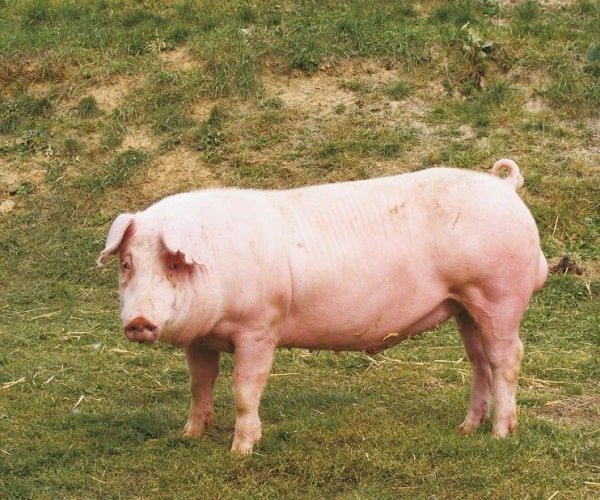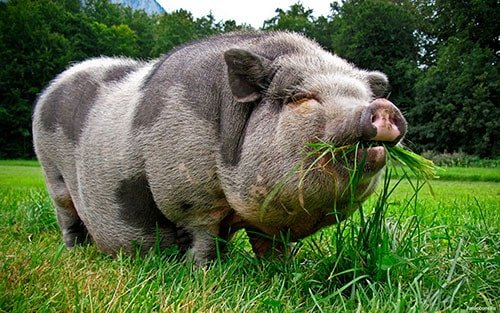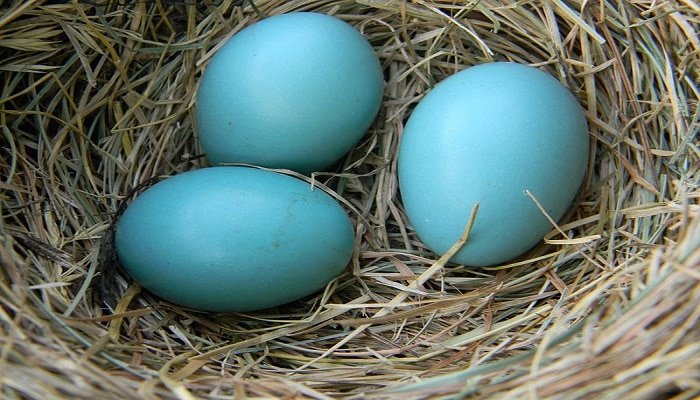Orpington Chicken – Characteristics, Origin, Breed Info and Lifespan

Picture this plump, beautiful, stately, fully feathered chicken. What name would you give it? Well, it already has a name: the Orpington chicken.
Here’s an article about this gracious flawless chicken who goes about her business on the farm as royalty.
Did I mention she is the Queen’s favourite chicken?
This article discusses all you need to know about this British pride chicken.
Of course, this includes its temperament, breed characteristics, egg-laying abilities, and varieties.
Let’s get into the details.
What is an Orpington chicken?
The Orpington is a hybrid British breed of chicken birthed in response to the need for a large black dual-purpose breed.
Although they still lay enough eggs and are certainly good for meat, they are mostly show-birds.
Particularly, this breed of chicken was Queen Elizabeth’s favourite.
Her flock won several awards for their beauty and grace.
These sets of chickens lay eggs and produce tasty meat and the hens go broody easily.
Discover more about this chicken below!!!
What is the origin and history of Orpington chickens?
Black Orpington chicken is a crossbreed from the Minorca, Plymouth and Langshan chicken breeds.
It was first bred by William Cook in 1886.
What many do not know is that this hybrid came in response to the need for black ornamental chickens who will hide the dirt and soot of London.
Therefore, when William Cook achieved this hybrid, its fame spread abroad when he exhibited it in Madison Square Gardens in 1895.
The Orpington chickens originally came in black, white, buff, blue and splash colours. Usually, buff is the most common colour.
Following this success, Herman Kuhn at the beginning of the 20th century developed the Orpington chicken Bantam variety.
This new variety came in different appealing colours but they were small in size.
Aside from its petite nature, the Bantam variety of Orpington chickens retained all the characteristics of the standard breed as invented by William Cook.
The Orpington breed gained ground in the UK that it even has a club: the Orpington club.
But in 1975, there was a merger between the standard club and the Bantam variety club. This led to a new club.
The American breeder’s club knows it as the United Orpington Club.
On the other hand, the Australorp club for this breed is known as the Orpington Club of Australia.
With the different varieties scattered around the world, only the original colours are recognized by the American breeder’s club.
Although there are other colours such as black, blue laced, white, buff, red, buff black laced, barred, buff Columbian, and birchen, you should know they are the Bantam variety.

What are the characteristics of Orpington chickens?
Owing to the fact that the Orpington chicken breed came from a lineage of other chickens, it’s most likely that they will exhibit features similar to theirs.
However, such similarity doesn’t mean they’re the Orpington breed.
Therefore, below you will find the major defining characteristics of the Orpington breed;
1. The possess a unique body shape:
The Orpingtons are broad, heavy and curvy.
They have a U-shaped underline and possess a short back.
In addition, they are very heavy birds with small heads and a medium-sized comb.
They usually possess a single comb with 5 points, although some are rose-combed.
Their beak and legs are pinkish-white, but their eyes are reddish bay in colour.
Their wattles, comb, and earlobes are all red.
2. The Orpington chicken have fluffed out feathers:
Their fluffed out feathers make them have this “larger than thou” look.
Although they look rather large, Orpington Chickens are a mass of feathers and their body frame is not that big.
Some of these feathers stretch out to cover most of their legs.
But this doesn’t mean they have feathered legs.
Also, the feathers of the Orpingtons are broad and smooth.
The plumage is ‘close’ – not ‘fluffy’ like a Cochin or ‘tight’ like a Game Fowl.
3. The Orpington chicken breeds have differing weight:
Depending on the hybrid, the weight of the Orpingtons is not unique.
The Buff Orpingtons have different weights from the others.
But according to the Poultry Club of Great Britain, usually the cocks weigh 3.60 to 4.55 kg.
And the hens weigh between 2.70 – 3.60 kg.
The Bantam variety on the other hand weighs less than the above estimate.
4. These English birds are neat birds:
Usually, the Orpington chickens successfully hide dirt and soot as intended by William Cook.
Their feet and shanks are usually clean. They maintain the pinkish-white colour all year.
5. The Orpingtons come in two sizes:
As earlier mentioned, the Orpington chickens have two varieties from William Cook and Herman Kuhn.
The William Cook Orpington chicken are the large fowls.
Whereas Herman Kuhn’s variety is the Bantam variety.
And the Bantam varieties are smaller in size.
6. The Orpingtons are not sickly birds:
Generally, they are robust and healthy chickens.
You will rarely find a sick one.
Apart from the usual chicken parasites, worms, ticks and lice, the Orpingtons do not have a health issue.
Their living long will depend on your management style.
7. Orpington chickens are poor flyers:
Because they are heavy birds, flying would rarely come to their mind.
Their weight and body nature keep them on the ground.
Except for the average perchings a few inches off the ground, the Orpingtons are poor flyers.
Therefore, they would never be found over the neighbours’ fence.
Table summarizing the Orpington breed information
| Skin colour | White |
| Egg colour | Brown |
| Comb type | Medium Single |
| Setter/Broody | Yes |
| Especially Docile | Yes |
| Use | Exhibition Meat Eggs |
| Cold Hardiness | Hardy in winter |
| Conservation status | Not at risk |
| Heat Tolerance | Not especially heat hardy |
| Also Known As | |
| Personality | Calm, Friendly, Docile and Quite |
| Country of origin | United Kingdom |
| Standard | The Orpington Club (UK)Orpington Club of Australia |
| Bears Confinement | Bears confinement well |
| Weight | Male: 3.60–4.55 kgFemale: 2.70–3.60 kg |
| Varieties | Standard: Buff, Black, White and Blue. Bantam: black, blue laced, white, buff, red, buff black laced, barred, buff Columbian, and birchen |
Why choose Orpington chickens?
These royal birds can make a wonderful addition to the farm.
But beyond royalty, what else do these birds have to offer?
If you’re looking for the perfect bird to add to your flock, here are a few reasons why the Orpington chicken breed can be a good choice;
1. They make wonderful mothers to baby chickens:
The Orpingtons are broody birds. Many know them as the ultimate mother hens.
They are the kind of birds that will chaperone all fertilized eggs on the farm.
It can become the unofficial matron on the farm.
Their flurry feathers make them want to crawl on top of every nest full of eggs to keep the unborn chicks warm and safe.
Now, that’s behaviour is cool!!!
Therefore, if you are looking for a chicken that will help you hatch eggs naturally, the Orpington chicken breed is your best bet.
And just like the Cochin Chickens, they can help you hatch other eggs aside from theirs.
2. Gentle and friendly chickens which make great pets:
Their calm docile nature and flurry feathers make them good lap buddies.
Naturally, they are good-natured and always ready for a big hug.
Orpington chickens are perfect pets for young children, softly spoken adults or any animal lover.
To own an Orpington means to truly value the virtue of kindness.
In the long run, this kind of bird may become your confidant, role model and life coach.
3. The Orpingtons are dedicated egg providers:
Do you know the kind of birds that lay eggs in season and out of season?
Yep, that’s an Orpington.
The Orpingtons can be trusted to always keep you in a good supply of eggs.
On average, they keep producing about 300 eggs a year.
Even in rough times.
Actually, this reliability is one of the reasons why many farmers keep the Orpington chicken.
4. The Orpington chicken breed comes in different colours:
This chicken breed comes in varieties of colours which makes it easier for farmers to have a large pot to choose from.
Also, their fluffy feathers are pretty to behold.
5. Well connected with the British royal family:
Keeping an Orpington will mean you are now connected with the British royal family.
History has it that the Orpington chickens are a favourite among the British royal family.
6. They are an all-purpose bird:
These sets of birds can steal the heart of everyone in an exhibition show.
Also, they serve as good table meat. And owing to their large heavy nature, they produce large chunks of meat in each bite.
Also, they can be trusted to lay enough eggs.
What a chicken breed!!!
Therefore, depending on why you need it, you can be sure the Orpingtons will deliver.
The exhibition strains are bred by the purists who want to breed the perfect bird.
Whereas the utilitarians focus first on egg-laying, meat and then appearance.

What are the disadvantages of having the Orpington Chickens?
Keeping an Orpington breed comes with a lot of advantages.
But on the flip side, this favourite breed of Queen Elizabeth The Queen Mother has some features that might be a problem.
Below you will find out why you have to think twice before adding the Orpington chickens to the flock;
1. Orpington chickens suffer from prolapse and egg binding:
Now, this doesn’t sound good.
One of the bug problems the Orpingtons have is their weight.
If they gain much weight, it can create egg laying problems such as prolapse and egg binding.
And this is not economical.
2. The Orpingtons are high maintenance birds:
Having an Orpington means “work”.
The lice and ticks will mean you have to treat them on spot or schedule regular treatments.
Spot treatment will require you to do so every 7 days.
At least until you break the parasite’s life cycle.
Also, you get to deworm them twice a year or as the case may be.
3. Sometimes they need to be fed with medicated feeds:
Yes, the Orpingtons are susceptible to the outbreak of coccidiosis.
Although vaccination can keep this disease in check, for those who weren’t medicated, you need to constantly feed them with medicated feeds.
This is to ensure you prevent an outbreak of coccidiosis disease.
And just so you know medicated feeds are more expensive.
4. Orpington chickens all look alike except for colour differences:
It’s usually hard to tell which Orpington is which.
They all have this same look except for their colour varieties.
Most farmers tend to differentiate them using a leg band.
5. They are easily bullied:
The Rhode Island Red will readily give the Orpington chickens a rough time always on the farm.
They can get beat up by any bossier chickens such as the Ayam Cemanis.
And sadly, these peace-loving chickens do not react.
Frequently Asked Questions About Orpington chickens
1. What is the lifespan of Orpington chickens?
These sets of chickens are known to have a lifespan of 8+years.
Their living longer than their estimate depends on their management style.
2. Are Orpington chickens good for meat?
Yes, the Orpingtons make large table fowl.
And a bite will always fill the mouth with tasty meat.
3. Can Orpington chickens be trained as pets?
Yes, the calm and docile disposition of these sets of birds make them great pets
As earlier stated, they can steal your heart at each glance.
Also, they make great pets for both kids, adults and other animal lovers.
4. Are Orpington chickens good egg layers?
Well, partially.
The Orpingtons are not really prolific egg layers but you can count on them to lay enough eggs.
Their eggs are large and light-brown in colour.
However, today the Orpington chicken chosen for shows wouldn’t lay many eggs compared to the ones raised by the utilitarians.
5. How often do Orpington chickens lay eggs?
On average, the Orpington chickens lay about 3-5 in a week.
This accounts for about 175 to 200 eggs each year.
In time immemorial, the Orpingtons were known to lay about 340 eggs per year.
The decline in egg production was due to breeders selecting for looks of this chicken over utility.
6. What do Orpington chickens eat to grow big?
On a general note, the Orpingtons are large birds.
What this means is that you don’t have to do much to make them grow big.
Also, getting them to grow big will be a big problem.
When they get obese, they will be susceptible to certain illnesses which will affect their productivity.
But for healthy growth, the chicks should be fed with high-quality feeds containing 20% protein.
When they get to 16 weeks, feed them with feeds containing 16% layer feed.
In addition to these, you also need to give them oyster shells and grit in separate bowls.
Also, clean fresh water should always be available for your birds too.
Just to reiterate, watch their weight if you need more productive birds.
7. How fast do Orpington chickens grow?
On a general note, the Orpingtons grow just like other chickens aside from the Faverolles which grow faster.
8. Are Orpington chickens noisy?
No, they are not noisy birds.
Aside from the occasional outbursts (predator alerts and the egg song), they keep a very low profile.
You don’t have to worry about the neighbours, they wouldn’t come knocking in reaction to chicken noise.
Therefore, the Orpingtons are well suited for urban and suburban regions.
9. What is the habitat and environment of Orpington chickens?
These Queen Elizabeth favourites sure do need to be treated like royalty.
And because they are fluffy large birds, they like space.
You should make provision for at least 4 square feet of coop space or more.
Because they are below on the pecking order, they get picked on. Therefore, a way of escape from these assertive birds should be created.
Their perching space should range between 8-10 inches each. This should give them room to stretch.
A nesting box of about 12×12 inches will suit them fine.
Also, a roaming space of 8-10 square feet each in the run will keep them confined.
A perching place, leaf piles and cabbage piñatas will be a good provision to keep them busy.
All these will keep them good in confinement.
However, if you can let them go free-range, that’s best.
Conclusion
Now you see, there is so much goodness as well as some not so good qualities about the Orpington chickens.
But the disadvantages are not supposed to scare you.
If they fulfil your need for a chicken then add them to the cart.
References
- How To Care For Day-Old Chicks
- How Do Chickens Mate? A Detailed Explanation
- What is Bumblefoot in Chickens and How Do You Treat Them?
- Types of Poultry Housing and Poultry Housing Systems
- Newcastle Disease; Causes, Symptoms, Treatment and Prevention Tips
- Poultry Farm Equipment: All You Need to Start Poultry Farming

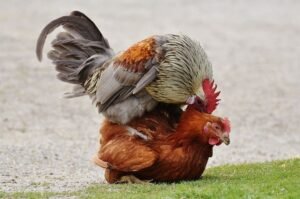

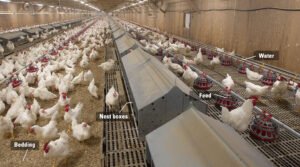

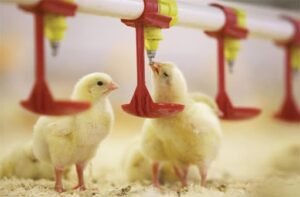


![Top 10 Chicken Breeds That Lay Large Eggs [With Pictures]](https://agro4africa.com/wp-content/uploads/2021/10/list-of-chicken-breeds-that-lay-really-large-eggs-768x588.jpg)
